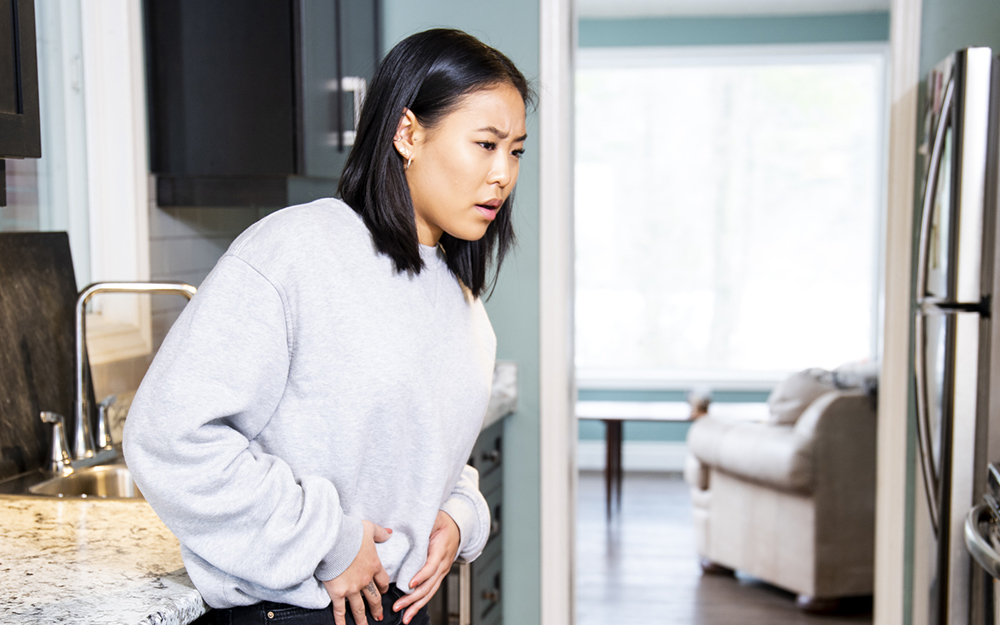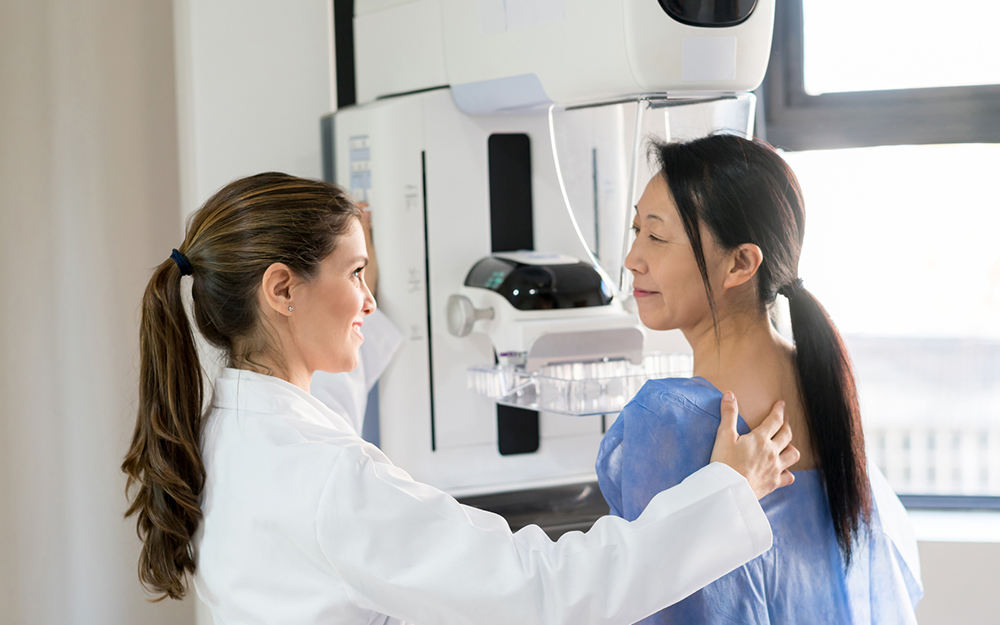Understanding Ovarian Cysts
Date
April 4, 2022

Date
April 4, 2022
Credits
Medical providers featured in this article
In Brief
{{cta-block}}
Women might be scared or surprised to learn that they have an ovarian cyst.
But these fluid-filled sacs that develop on or inside a woman's ovaries are much more common than you might think—and they are usually not a cause for concern. An estimated 10% of women experience ovarian cysts. Many women don't even realize they're there because benign ovarian cysts can be asymptomatic and frequently resolve on their own.
Sometimes, though, they can grow too large or rupture and cause severe pain. In rare cases, they could become cancerous.
Gynecologists say paying attention to what's going on with your body can help you determine what's typical—and safe—for your reproductive system and assist you in staying ahead of any complications.
"Cysts are a normal part of a fertile body's process," says Dr. Elizabeth Kim, a Cedars-Sinai OB-GYN. "What's not normal is significant pain or ongoing duress."
{{providers}}
"If you're unable to drink or keep any fluids down, you need more help."
Reproductive cycle ties
Women and transgender men (men who were assigned female at birth) of childbearing age who are not on hormonal birth control and don't have any health conditions restricting their periods often form at least one usually small cyst on an ovary every month, explains Dr. Kim.
A natural feature of the ovulation process, the cysts tend to pop up shortly before the menstrual cycle.
Most commonly, these are functional cysts that either continue to grow inside an ovary when an egg isn't released (known as follicular cysts) or form when the sac surrounding an egg stays intact after the body releases the egg (a corpus luteum cyst).
Although these cysts are not always detectable, one common sign of them is pain that occurs on just one side of the abdomen. This can either be sharp or dull and may come and go.
Functional cysts typically clear up on their own within six to eight weeks, according to the American College of Obstetricians and Gynecologists (ACOG).
Gastrointestinal discomfort
Mild gastrointestinal symptoms like constipation, diarrhea, bloating and stomachaches are also common.
"If you think about your belly as a closed compartment, a cyst that's getting a little bit larger can press on and affect other things in that space," Dr. Kim says.
Most cysts hover around 2-3 centimeters. In rare cases, they can grow all the way up to 30 centimeters. When they reach a substantial size, they may start to impact a woman's bowel and bladder, causing swelling and pressure.
Reproductive health risk factors
Certain conditions can raise the risk of chronic, uncomfortable cysts.
Polycystic ovary syndrome (PCOS) can cause multiple cysts to cluster on ovaries. Not everyone with PCOS will develop cysts, although it does increase your chances. The masses on their own don't mean you have the hormonal illness, either: A diagnosis requires 12 or more follicular ovarian cysts, among other symptoms, specialists note.
Women with endometriosis—when endometrial tissue grows outside the uterus—can grow endometriomas, also known as chocolate cysts. They consist of old menstrual blood and endometrial tissue.
Fertility medicines, such as clomiphene, and pregnancy itself are also linked to ovarian cysts.
Rupture and complications
If you are experiencing persistent, throbbing pain that is tolerable but getting worse, Dr. Kim says it's time to visit your OB-GYN or primary care provider. It usually stems from unchecked growth of ovarian cysts.
Your doctor will perform a pelvic ultrasound and exam to identify a cyst, as well as blood work to detect any underlying conditions, including hormone problems, pregnancy or ovarian cancer.
Seek help at your nearest emergency room if your symptoms are unmanageable and potentially life-threatening, she adds. Significant, worsening pain—especially on your right side—could indicate a serious medical emergency, such as appendicitis, and needs to be evaluated. Uncontrolled nausea, vomiting and pain that isn't improving after 12 hours also need to be examined.
"If you're unable to drink or keep any fluids down, you need more help," she stresses.
Extreme pain in either side of your lower abdomen or back might mean a cyst has opened. While the average rupture typically won't cause further complications, some can cause a small amount of bleeding at the site of the cyst, potentially dropping your blood pressure.
Another rare but serious consequence of ovarian cysts is fallopian tube twisting, which can cut off ovarian blood supply.
These complications require immediate treatment.
Treatment options for ovarian cysts
If you have a potentially worrisome cyst that hasn't burst, your gynecologist might monitor its progress through repeated ultrasounds, ACOG notes. Significant growths could require conservative pain management and fluids for hydration.
Due to heavy blood loss—which can cut off blood flow to essential organs—patients with severe symptoms of rupture may need to stay at the hospital until bleeding stops. Your provider can replace fluids or blood, if necessary.
Doctors may suggest surgery for patients who have:
- An abnormally large cyst
- Continued growth
- Complex cysts (like endometrioma) that contain solid areas, bumps or tissue
- Endometriosis, for fertility-preserving reasons
- Ongoing bleeding or complications
- Health conditions that make it difficult to stop blood flow
- Cancer warning signs
Surgeons use either minimally invasive laparoscopy or open surgery to remove the mass, as well as any blood clots, excess blood or fluid—and sometimes the surrounding ovary. Your fertility goals and family history of breast and ovarian cancer often factor into your care plan.
Estimates cited by the Office on Women's Health at the U.S. Department of Health and Human Services show that around 5%-10% of women undergo ovarian cyst removal. Just 13%-21% of those cysts are cancerous.
Women's health experts agree that the risk of ovarian cysts leading to ovarian cancer is very low, but ovarian cyst growth does slightly increase the risk of ovarian cancer for older, postmenopausal women.
Take charge
Stay vigilant, especially if your doctor has already informed you of an existing cyst.
And if you experience chronic cysts that cause pain or rupture, work with your doctor to create a preventive plan, Dr. Kim says. Your doctor can prescribe various types of hormonal birth control, which stop the cycle that allows these cysts to form.
Learn more about the Obstetrics & Gynecology program and Gynecologic Services at Cedars-Sinai.





